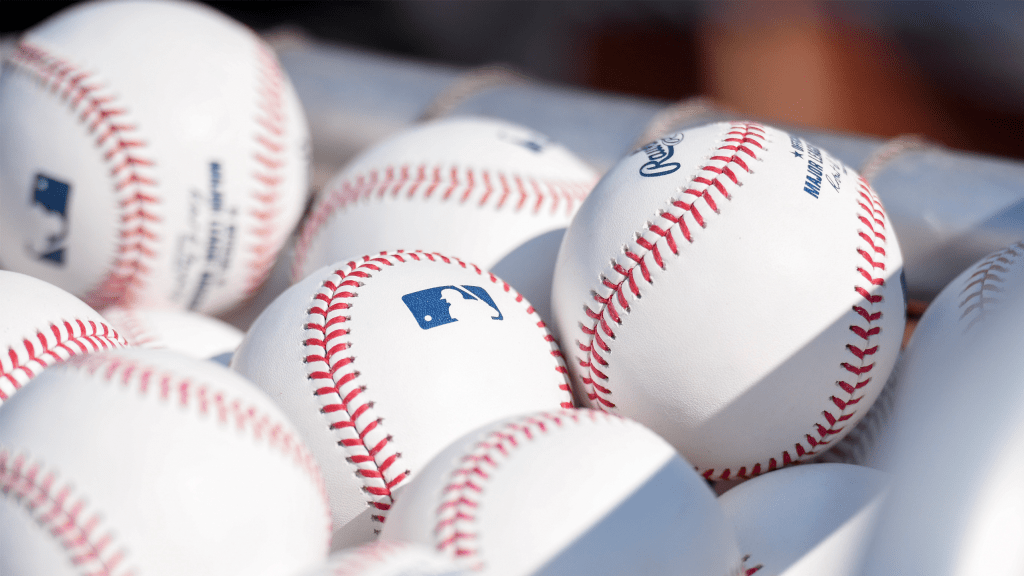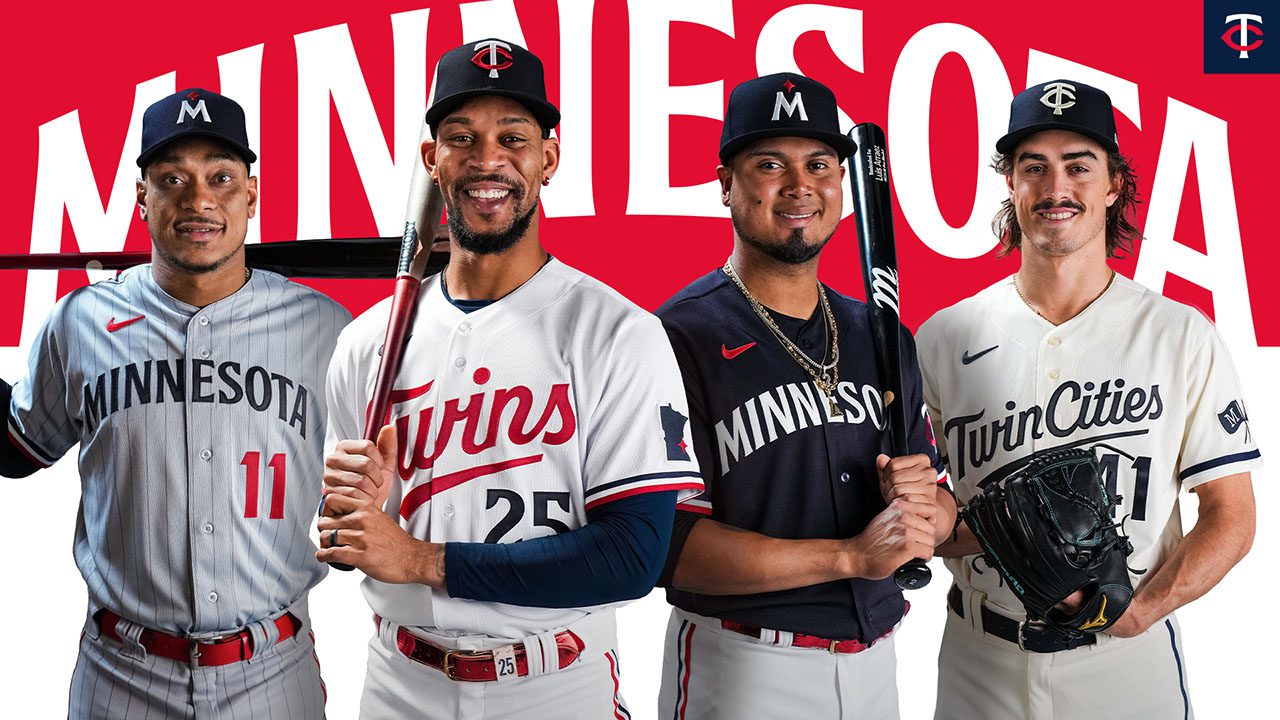 |
| mlb.com |
Larger Bases
Many fans were a little confused as to why the MLB is going to have larger bases in 2023 and what impact that could have on the game. First, the number one reason the MLB wants to increase the size of the base is because they believe that this will lead to fewer injuries for runners on the basepaths. The logic makes sense, as bigger bases would allow runners more room to avoid defenders when sliding, which in turn would lead to less collisions between runners and defenders, and ultimately less injuries occurring. The MLB is also hoping for more bases to be stolen as a result of this change, since the runners will have a slightly bigger target to slide into when trying to swipe a bag. This change comes at a good time, as stolen base numbers have been way down from where they were many years ago. Stolen bases are such a small part of the game now. In fact, going all the way back to 1887, Hugh Nicol set the single-season stolen base record, stealing 138 bases. But if that example is too far in the past for you, then take Rickey Henderson's season in 1982, where he stole 130 bases. Now compare that to the MLB's stolen base leader in 2022, Starling Marte, who stole 47 bases. Yes, you read that correctly. That stat alone is all that needs to be said when it comes to explaining why the league is hoping for more bags to be swiped, especially considering how much humans have grown athletically since 1887. No offense to Hugh Nicol, I have never watched him play and am certainly not brushed up on him as a player, but you would have a hard time convincing me he was even close to as fast as Byron Buxton.
Banning the Shift
 |
| mlb.tv screen-grab |
Pitch Clock
I have some mixed feelings on the implementation of a pitch clock, but overall I am anticipating it to be a positive change for Major League Baseball. Many people complain that the games are way too long, and that nobody wants to sit through a three hour game that is not loaded with action constantly throughout the game (NFL games take about the same amount of time as MLB games, interestingly enough). So, the MLB decided that one way to combat this issue was to implement a pitch clock. The MLB decided to test this idea out by implementing a pitch clock in Low-A ball in 2021, and it came back with very positive feedback on the pace of play from the players, coaches and umps at this level. In fact, they saw the average game time dip from three hours and one minute down to two hours and 41 minutes. As to how this pitch clock works, the one that was tested out in the minors gave pitchers 15 seconds to throw a pitch with the bases empty, and 17 seconds to throw a pitch with runners on base. If pitchers did not start throwing their pitch on time, the home plate umpires could automatically call a ball. We are not sure as to if this will be the same for the big leagues or not, but I would expect something similar to this in 2023. I think this change will be welcoming in the sense that some MLB pitchers like to work extremely slow, and it will be nice that they will be held accountable for that soon.
Modern MLB Pitching Philosophy
This isn't a rule change, but another thing that I feel needs to be touched on is how much pitching has changed in the MLB. Pitching used to be dominated by starters, and the really good ones would typically go as deep as they could into all of their starts as long as they were having a good outing. Nowadays, starters are really only expected to get through 5 innings or so, and anything higher than that is a bonus. This is mainly for two reasons: first, teams are now taking a much more analytical approach to managing a game, and will make decisions on when to remove a pitcher and who to put in for him based on matchups, and how many times the batting order has seen that pitcher. This sounds great, except this lead to many managers not managing the game with any feel, and just solely relying on what the numbers tell them when it comes to making a pitching game. I think managers and teams in general need to find a balance between using analytics to the fullest and managing the game with feel at the same time. Secondly, teams are now significantly more concerned about the health of their pitchers arm's than they used to be, wanting to avoid the feared Tommy John surgery. While this sounds great too, it actually has not worked, as the number of guys tearing their UCL and needing Tommy John surgery has only been increasing from where it was at all the way back in the 1990s. The reason for this is not known for sure, but I suspect that it is because of a few different possibilities, the first of those being that pitchers are now conditioned to not have to throw as many pitches, so their arms naturally are unable to handle as much as they used to. A second possibility for this is that now, starting at a young age all the way through high school, the top baseball prospects basically are playing baseball year round. It has been proven that a pitcher's arm needs rest in the offseason, and a lot of kids may not be getting that needed rest. A third potential reason is that pitchers nowadays are throwing much harder than they used to, on average. There are a lot of guys in the majors who can throw a baseball 95 miles per hour, and throwing a baseball is not a natural movement to begin with, so throwing the ball with that much force while doing a movement that is already unnatural could lead to more injuries. But there is also the factor that there are much more resources available now to take better care of your arm.
Here is an example of why this change in pitching philosophy irks me so much: Let's go back to 1991. Many people consider Game 7 of the 1991 World Series to be one of the greatest MLB games ever played. For those that aren't already aware, this is the game that Jack Morris and John Smoltz had the ultimate pitcher's duel and completely dominated the game right from the get-go. Smoltz threw 7 and 1/3 shutout innings, and Morris threw 10 shutout innings on 122 pitches while picking up the biggest win of his life. Guys who participated in that game look back on it as one of the most dominate displays of pitching the game has seen. One story that the old Twins manager, Tom Kelly, has told is that he was going to take Morris out of the game after the 9th inning, but changed his mind after confiding with some of his assistant coaches. In an interview with Sports Illustrated, former Twins outfielder Randy Bush had said "I want to know one thing: Who was going to take (Morris) out of this game? I don't think anyone would have done it. If it was (Tom Kelly), Jack would have punched him, kicked him--he might have killed him." If this quote doesn't exemplify how epic of a performance that was, then I don't know what does. It should be mentioned that Morris also miraculously pitched two games on three days rest, which was pretty unheard of even back then. Also, Smoltz was rolling through the Twin's lineup but was pulled for a reliever in the 7th.
The whole point of that example is that we will never see a game like that ever again in the modern-day MLB. It feels like a fan like me who is part of the younger generation has been stripped of potentially seeing true pitcher's duels that go down to the wire on the biggest stage because most managers are too worried about how many times a batter has seen his starting pitcher (even if he is dominating), or what kind of matchup he is going to get with the next batter. Now, while I think knowing this data is important and can help one successfully manage a game, it should not be the sole factor when it comes to decision-making. All in all, it just makes me sad because it feels like the younger generation will never truly get to experience an epic form of baseball like that Game 7 in 1991.

Really great post, AJ. I agree with most of your comments, though I think I'm in favor of the "no shift." I'm torn on it. I don't think MLB should dictate how teams play defense, but that was one area where data analytics was sort of ruining the game in my opinion.
ReplyDeleteAJ, you dominated this post. Many good points, especially about the pitching philosophy. The constant turnstile of relief pitchers coming into the game as well as the new age 3-outcome hitting philosophy is slowly ruining major league baseball.
ReplyDelete